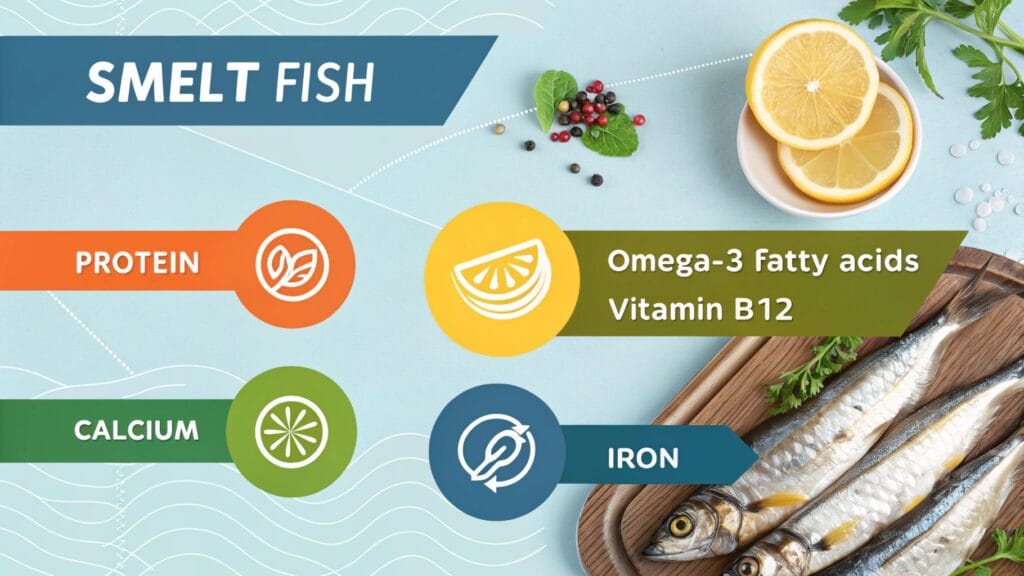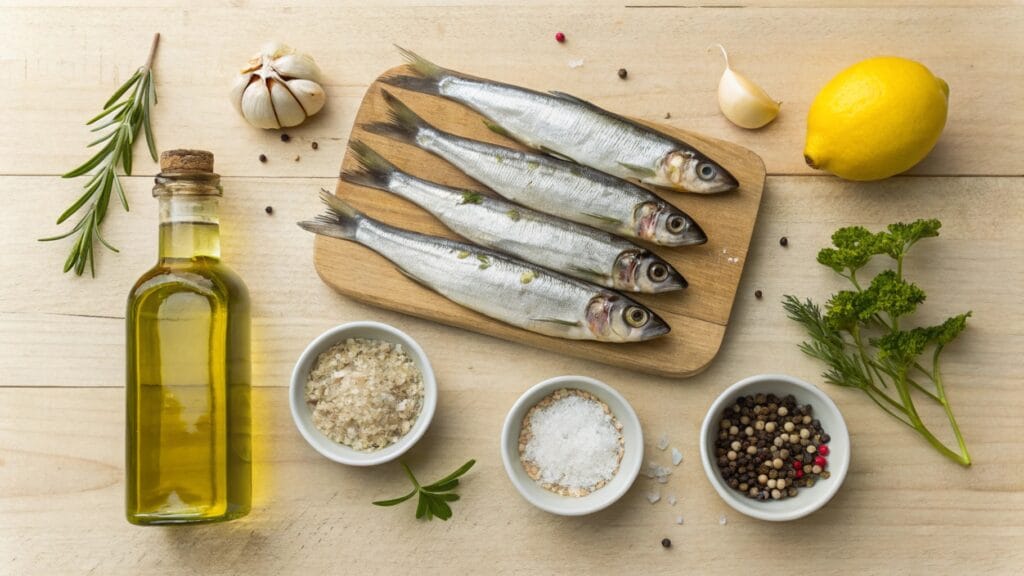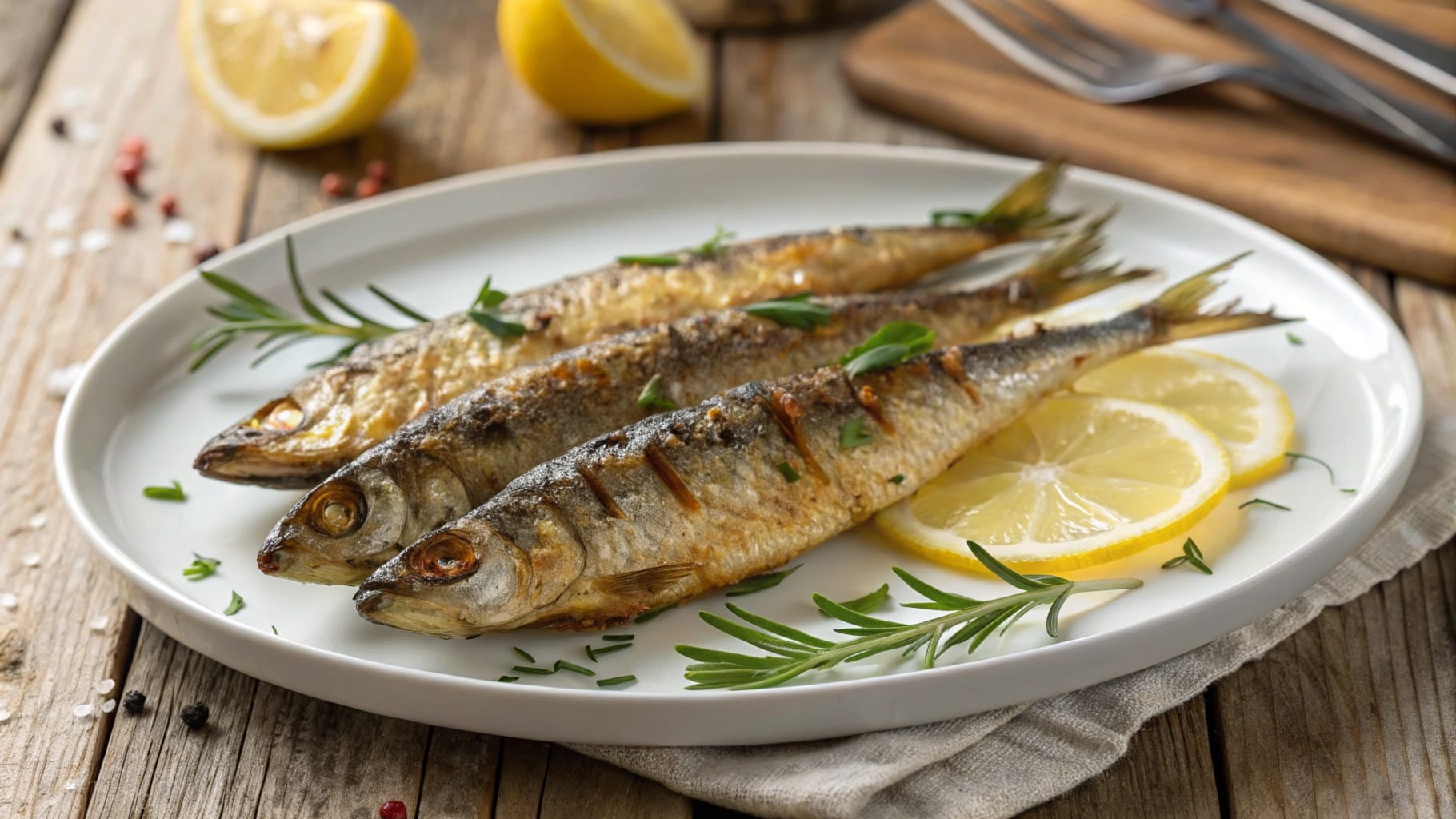When it comes to seafood, we all have our favorites. Salmon, tuna, shrimp – these are household names. But there’s one small fish that doesn’t get as much love despite its amazing taste and nutritional benefits: smelt fish. This unassuming little fish packs a punch in terms of flavor, health benefits, and versatility in the kitchen. So, let’s dive into the world of smelt fish and explore why it should have a spot in your next meal. 🐟
What is Smelt Fish?
Smelt fish may not be a household name for many, but this small, slender fish is a gem in the world of seafood. Smelts belong to the Osmeridae family, a group of fish known for their tiny size and silvery, shimmering bodies. These fish are often found in cold waters like lakes, rivers, and coastal areas, particularly in parts of North America, Europe, and Asia.
A Brief Overview of Smelt Fish
Smelts are usually about 5-6 inches long, although some species can grow up to 12 inches. They have a slightly sweet, mild flavor and a soft, delicate texture that makes them a great choice for grilling, frying, or even adding to soups and stews. If you’ve ever had a dish like fried shishamo, you’re familiar with the concept of smelt fish in Japanese cuisine, though they’re also popular in Scandinavian and American dishes.
Different Species of Smelt
There are over 30 species of smelt, but some of the most popular ones include:
- Rainbow Smelt (Osmerus mordax): Found in North America, this species is popular for both sport fishing and cooking.
- Capelin Smelt (Mallotus villosus): Often found in the North Atlantic, capelin is a key species in the fishing industry.
- Japanese Smelt (Hypomesus nipponensis): Also known as Shishamo, this species is commonly eaten in Japan, often grilled and served whole.
Each species has its own slight variations in flavor and texture, but all are rich in nutrients and perfect for culinary experimentation.
Nutritional Benefits of Smelt Fish
If you’re looking for a healthy seafood option, smelt fish should be at the top of your list. These little fish may be small, but they’re packed with essential nutrients that can do wonders for your health.
High Protein Content
Smelt fish is a great source of high-quality protein, which is essential for muscle growth, repair, and overall body function. For a small fish, smelt packs a serious punch when it comes to protein content, offering around 18 grams of protein per 100 grams.
Protein is crucial for maintaining healthy skin, hair, and nails, and it also helps keep you feeling full longer. So, whether you’re recovering from a workout or just need a quick snack to keep you energized, smelt fish is a fantastic choice!
Omega-3 Fatty Acids and Their Benefits
Another reason smelt fish deserves a place on your plate is its omega-3 fatty acids. Omega-3s are the good fats that our bodies need for heart health, brain function, and reducing inflammation. Unlike other fish, smelt is particularly rich in these essential fats.
Eating just a small serving of smelt can contribute to better cardiovascular health, improved brain function, and even support healthy joints. Whether you’re looking to prevent heart disease or boost your cognitive function, smelt’s omega-3 content makes it a stellar addition to your diet. 🧠❤️
Rich in Vitamins and Minerals
Smelt is also packed with essential vitamins and minerals, including:
- Vitamin B12: Important for energy production and maintaining a healthy nervous system.
- Vitamin D: Helps with calcium absorption and supports bone health.
- Iron: Vital for creating red blood cells and carrying oxygen throughout the body.
- Calcium: Essential for strong bones and teeth.

A small serving of smelt can provide a significant portion of your daily requirements for these nutrients, making it a great addition to a balanced diet.
Nutritional Information (Per 100g Serving)
| Nutrient | Amount |
|---|---|
| Calories | 99 kcal |
| Protein | 18 g |
| Fat | 3.5 g |
| Omega-3 Fatty Acids | 1.3 g |
| Carbohydrates | 0 g |
| Vitamin B12 | 2.2 µg |
| Vitamin D | 160 IU |
| Calcium | 200 mg |
| Iron | 0.9 mg |
Pro Tip: Smelt fish is low in calories but high in nutritional value, making it a great option for those looking to stay healthy without overindulging. 🥗
The Best Ways to Cook Smelt Fish
Now that you know why smelt is so good for you, let’s talk about how to cook it! Whether you prefer grilling, frying, or simmering it in a stew, smelt is versatile and easy to prepare. Here are some popular cooking methods:
Grilled Smelt Fish Recipe
Grilling is one of the best ways to prepare smelt fish because it brings out its natural flavors without overpowering it. Here’s a simple grilled smelt recipe:

Ingredients:
- 10-12 smelt fish (fresh or thawed)
- 1 tablespoon olive oil
- 1 teaspoon garlic powder
- 1 teaspoon lemon zest
- Salt and pepper to taste
- Fresh lemon wedges (for serving)
Instructions:
- Preheat your grill to medium-high heat.
- Drizzle olive oil over the smelt fish and season with garlic powder, lemon zest, salt, and pepper.
- Place the fish on the grill and cook for 3-4 minutes per side, until the fish is crispy and golden brown.
- Serve with fresh lemon wedges and enjoy!
Grilled smelt pairs perfectly with a side of roasted vegetables or a light salad.
Fried Smelt Fish Recipe
For a crispy, savory treat, fried smelt is an excellent choice. This method brings out the fish’s delicate texture and creates a satisfying crunch.
Ingredients:
- 12 smelt fish (cleaned and gutted)
- 1 cup all-purpose flour
- 1 teaspoon paprika
- 1 teaspoon salt
- ½ teaspoon black pepper
- Vegetable oil for frying
Instructions:
- Mix the flour, paprika, salt, and pepper in a bowl.
- Dredge the smelt fish in the flour mixture, ensuring they are fully coated.
- Heat vegetable oil in a frying pan over medium heat.
- Fry the smelt for 2-3 minutes on each side, or until golden and crispy.
- Remove from the oil and place on paper towels to drain excess oil.
- Serve with a dipping sauce, such as tartar sauce or spicy mayo.
Fried smelt is perfect for a snack or a meal on its own. You can even serve it with a side of fries for a classic combo. 🍟
Smelt Fish in Stews and Soups
Smelt fish is also a great addition to soups and stews. Its delicate flavor adds depth to broths, and it cooks quickly, making it an ideal fish for hearty, warming dishes.
Example Recipe: Smelt Fish Chowder
A creamy smelt fish chowder is the perfect way to enjoy this fish on a chilly evening. Combine smelt with potatoes, carrots, onions, and some heavy cream for a rich, satisfying dish.
Block Quote:
“Whether grilled, fried, or simmered in a stew, smelt fish is a versatile and healthy option for anyone looking to try something new in their seafood repertoire.”
How to Properly Store and Preserve Smelt Fish
Smelt fish is best when it’s fresh, but what if you buy it in bulk or want to keep some for later? Proper storage and preservation are essential to maintaining its flavor and nutritional value. Let’s dive into how you can store your smelt fish like a pro! 🐟
Fresh vs. Frozen Smelt Fish
When buying smelt, you’ll usually come across two options: fresh and frozen. Both have their advantages, so it’s essential to know which one works best for your needs.
- Fresh Smelt Fish: Fresh smelt has the best flavor, and it should be consumed within 1-2 days of purchase. If you plan to cook it right away, this is the way to go. Fresh fish should be kept on ice or in the coldest part of the fridge to prevent spoilage.
- Frozen Smelt Fish: Freezing is a great option for longer storage. If you’re not ready to cook the fish right away, freezing it will maintain its taste and texture for up to 3 months. Make sure to wrap it tightly in plastic wrap or vacuum-seal it before freezing to prevent freezer burn.
Best Practices for Freezing Smelt Fish
If you want to store smelt for the long term, here’s how to freeze it properly:
- Clean and Gut the Fish: Before freezing, clean and gut the smelt (if not already done). Removing the guts will help maintain its quality when thawed.
- Rinse and Dry: Rinse the fish under cold water and pat it dry with paper towels to remove excess moisture.
- Wrap It Up: Wrap each smelt individually in plastic wrap or aluminum foil. This helps prevent freezer burn and keeps the fish fresh.
- Use Freezer Bags: Once wrapped, place the smelt in a freezer-safe bag. Be sure to squeeze out any excess air to prevent ice crystals from forming.
- Label and Date: Don’t forget to label the bag with the date so you know how long it’s been in the freezer.
By following these steps, you can enjoy fresh smelt months after buying it! ❄️
How Long Does Smelt Fish Last?
If stored properly in the fridge, fresh smelt will last about 1-2 days. If frozen, smelt can last up to 3 months without losing too much quality. However, for the best taste and texture, it’s recommended to use frozen smelt within the first month. The sooner you eat it, the better the experience!
Common Problems When Cooking Smelt Fish

While cooking smelt fish can be a delicious and easy experience, there are a few common problems that can occur. Let’s take a look at these issues and how you can avoid them.
Overcooking and Dryness
One of the most common mistakes when cooking smelt is overcooking it. Since smelt is a small fish, it cooks very quickly, and overcooking can result in a dry, rubbery texture.
Solution:
To avoid overcooking, make sure you’re monitoring the cooking time closely. Grilling or frying smelt for just 3-4 minutes per side is usually enough to get a perfectly tender fish. If you’re baking, try to bake smelt at a lower temperature (around 350°F) for 10-12 minutes. The key is to cook it just until it’s done and still moist. 🕒
Fishy Smell and Taste
Sometimes smelt, like other fish, can have a strong, “fishy” odor that’s off-putting. This can happen if the fish isn’t as fresh or hasn’t been stored properly.
Solution:
To reduce fishiness, try soaking the smelt in milk or lemon juice for 15-20 minutes before cooking. Both of these can help neutralize odors and bring out the natural sweetness of the fish. Additionally, adding fresh herbs, garlic, or citrus to the fish during cooking can mask any unwanted smells and enhance the flavor. 🌿🍋
How to Avoid Fishy Odors When Cooking Smelt
If you’re concerned about the smell while cooking smelt, there are a few tricks you can use to minimize the fishy scent in your kitchen.
Solution:
- Ventilate your kitchen: Open windows and turn on exhaust fans to help disperse the smell.
- Cook with aromatic herbs: Smelt pairs wonderfully with rosemary, thyme, and garlic, which can help combat the fishy scent.
- Use vinegar: Boil a small bowl of vinegar or lemon water on the stove while you cook the fish. This will absorb and neutralize any lingering odors.
Where to Find and Buy Smelt Fish
Smelt is relatively easy to find, but knowing where to buy it can save you a lot of time and effort. Here are some common places to get your hands on fresh or frozen smelt.
Buying Smelt Fish at Local Markets
If you live near a coastal area or near lakes and rivers where smelt are common, your local fish market is a great place to start. Fresh smelt can often be found at these markets, and you can ask the fishmonger about its source and when it was caught to ensure it’s as fresh as possible.
Online Sources for Smelt Fish
If you’re not near a market or prefer shopping from home, online seafood retailers are a fantastic option. Websites like Vital Choice or The Fish Society offer fresh and frozen smelt delivered to your door. You can even find smelt in specialty stores or delivery services that focus on fresh fish. 🛒
Fresh vs. Canned Smelt Fish
While fresh smelt is usually the best option, canned smelt can be convenient for those who want a quick and easy meal. Canned smelt is typically preserved in oil or brine, and it can be used in soups, salads, or sandwiches. Just keep in mind that the taste and texture of canned smelt might differ slightly from fresh.
The Environmental Impact of Smelt Fishing
Like all fishing industries, smelt fishing has its environmental challenges. Overfishing and poor fishing practices can negatively affect smelt populations and ecosystems. Here’s what you need to know about the environmental impact of smelt fishing and how you can make more sustainable choices.
Sustainable Smelt Fishing Practices
Look for brands or fishmongers that source their smelt from sustainable fisheries. These fisheries follow regulations that ensure smelt populations are maintained and that fishing practices are respectful of the environment. Avoid smelt that is caught in overfished regions or by methods that damage marine ecosystems.
The Importance of Smelt Conservation
Conserving smelt populations is crucial, especially since they play an important role in the food chain. Smelts are a key food source for larger fish, birds, and mammals. By choosing sustainably sourced smelt, you can contribute to the conservation of this vital species and ensure it remains available for future generations. 🌎
Block Quote:
“Sustainability isn’t just a buzzword – it’s about ensuring that the smelt fish you enjoy today is available for generations to come.”
Conclusion: Why Smelt Fish Deserves a Spot on Your Plate
Smelt fish is not only a delicious and nutritious choice, but it’s also incredibly versatile in the kitchen. With its rich protein, omega-3 fatty acids, and essential vitamins, it’s a powerhouse for your health. Whether grilled, fried, or added to soups, smelt offers a mild, sweet flavor that everyone can enjoy. So next time you’re looking for something new and healthy, give smelt a try – your taste buds and body will thank you!
FAQ: All You Need to Know About Smelt Fish
1. What Does Smelt Fish Taste Like?
Smelt seafood has a mild, slightly sweet flavor with a delicate, soft texture. When cooked, it becomes crispy on the outside but tender on the inside. It’s often compared to other small fish like sardines or anchovies, but it’s less intense in flavor, making it a great choice for people who are new to eating fish.
2. How Do I Know If Smelt Fish is Fresh?
Fresh smelt should have a clean, ocean-like smell with no strong “fishy” odor. The flesh should be firm and translucent, not slimy or mushy. If you’re buying fresh smelt from a market, check that the eyes are clear and bright, and the skin is shiny. If you’re buying frozen smelt, make sure it’s properly sealed and has no freezer burn.
3. Can Smelt Fish Be Eaten Whole?
Yes! Smelt seafood is typically eaten whole, including its bones, head, and tail. This is common in dishes like fried smelt, where the entire fish is crispy and easy to eat. However, if you prefer, you can remove the bones and head before cooking, though the tiny bones are soft and often not noticeable when cooked.
4. Is Smelt Fish Healthy to Eat Regularly?
Absolutely! Smelt is low in calories, high in protein, and rich in omega-3 fatty acids, which are essential for heart health and brain function. It’s also packed with vitamins and minerals, including Vitamin B12, Vitamin D, calcium, and iron. Eating smelt regularly can help boost your immune system, improve bone health, and support overall wellness.
5. What Are the Best Side Dishes to Serve with Smelt Fish?
Smelt pairs beautifully with a variety of side dishes. You can go light with a fresh salad, roasted vegetables, or steamed asparagus. For a heartier meal, serve smelt alongside mashed potatoes, rice pilaf, or crispy fries. A tangy dipping sauce like tartar sauce or a squeeze of fresh lemon can enhance the flavors even more.

